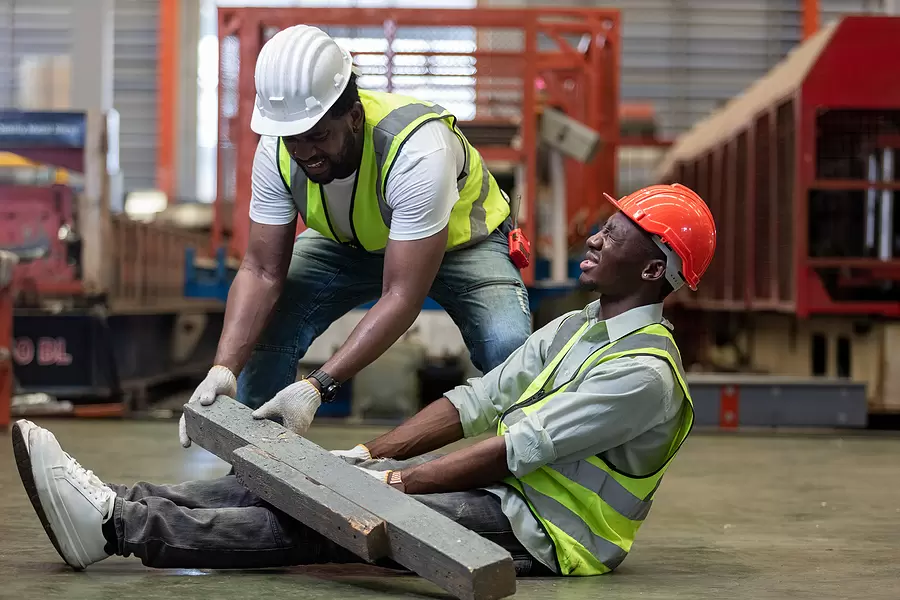Construction Accidents
Construction sites are inherently hazardous environments, and accidents can result in severe injuries or fatalities. Personal injury law allows injured construction workers or bystanders to seek compensation from negligent parties, including employers, contractors, or equipment manufacturers. These cases can be complex due to the involvement of multiple parties and regulations.

Common Causes
- Falls: From heights, scaffolding, ladders, or through floor openings.
- Falling Objects: Tools, materials, or debris falling from heights.
- Equipment Accidents: Malfunctioning or improperly used machinery like cranes, forklifts, and power tools.
- Electrocutions: Contact with exposed wires, power lines, or faulty electrical systems.
- Caught-In/Between: Being caught in or between machinery, equipment, or materials.
- Chemical Exposure: Exposure to hazardous substances and toxic chemicals.
- Explosions and Fires: Resulting from gas leaks, flammable materials, or unsafe practices.
- Repetitive Motion Injuries: Resulting from prolonged repetitive tasks without proper ergonomics.
Types of Injury
- Fractures and Broken Bones: From falls, machinery accidents, or being struck by objects.
- Head and Brain Injuries: Concussions, traumatic brain injuries (TBIs), and other head trauma.
- Spinal Cord Injuries: Leading to partial or complete paralysis.
- Burns: From fires, explosions, or chemical exposure.
- Cuts and Lacerations: From sharp tools, machinery, or materials.
- Respiratory Issues: From inhaling dust, asbestos, or toxic fumes.
- Amputations: Resulting from machinery accidents.
- Hearing Loss: From prolonged exposure to loud noises without proper protection.
Legal Considerations
- Establishing Liability: Proving that negligence by an employer, contractor, or equipment manufacturer led to the accident.
- Workers’ Compensation: In many cases, injured workers are entitled to workers’ compensation benefits, which cover medical expenses and lost wages.
- Third-Party Claims: If a third party (not the employer) is responsible for the accident, such as equipment manufacturers or subcontractors, a separate personal injury claim can be filed.
- OSHA Violations: Violations of Occupational Safety and Health Administration (OSHA) regulations can be evidence of negligence.
- Statute of Limitations: There is a limited time period within which a personal injury claim must be filed, typically ranging from one to three years from the date of the accident.
Evidence Collection
- Accident Reports: Documentation of the incident, including reports from supervisors, OSHA, or other authorities.
- Medical Records: Detailed accounts of the injuries sustained, treatments received, and long-term prognosis.
- Photos and Videos: Visual evidence of the accident scene, hazards, and injuries.
- Witness Statements: Testimonies from coworkers, supervisors, or bystanders who witnessed the accident.
- Maintenance and Inspection Records: Documentation of equipment maintenance, safety inspections, and compliance with safety regulations.
- Expert Testimony: Opinions from medical professionals, safety experts, and other specialists.
Insurance and Settlements
- Workers’ Compensation Insurance: Provides benefits to injured workers, covering medical expenses and a portion of lost wages.
- Liability Insurance: Coverage held by contractors, subcontractors, or property owners that may compensate for damages.
- Disability Insurance: For long-term or permanent disabilities resulting from the accident.
- Health Insurance: May cover additional medical expenses not covered by workers’ compensation.
Damages and Compensation
- Medical Expenses: Covers hospital bills, surgeries, medications, rehabilitation, and future medical care.
- Lost Wages: Compensation for time missed from work due to the injury, including future lost earning potential if the injury results in long-term or permanent disability.
- Pain and Suffering: Non-economic damages for physical pain, emotional distress, and reduced quality of life.
- Vocational Rehabilitation: Costs for retraining or education if the victim cannot return to their previous job.
- Loss of Consortium: Compensation for the impact on relationships with family members.
- Punitive Damages: In cases of gross negligence or intentional misconduct, punitive damages may be awarded to punish the wrongdoer and deter similar behavior.
Why Legal Representation Matters
Construction accident cases can be complex, involving multiple parties, insurance companies, and legal statutes. An experienced personal injury attorney can:
- Provide Legal Advice: Offering guidance on the legal process and what steps to take next.
- Gather Evidence: Collecting and preserving crucial evidence to build a strong case.
- Negotiate with Insurers: Handling communications and negotiations with insurance companies to secure fair compensation.
- Advocate in Court: Representing the victim’s interests in court if a settlement cannot be reached.

